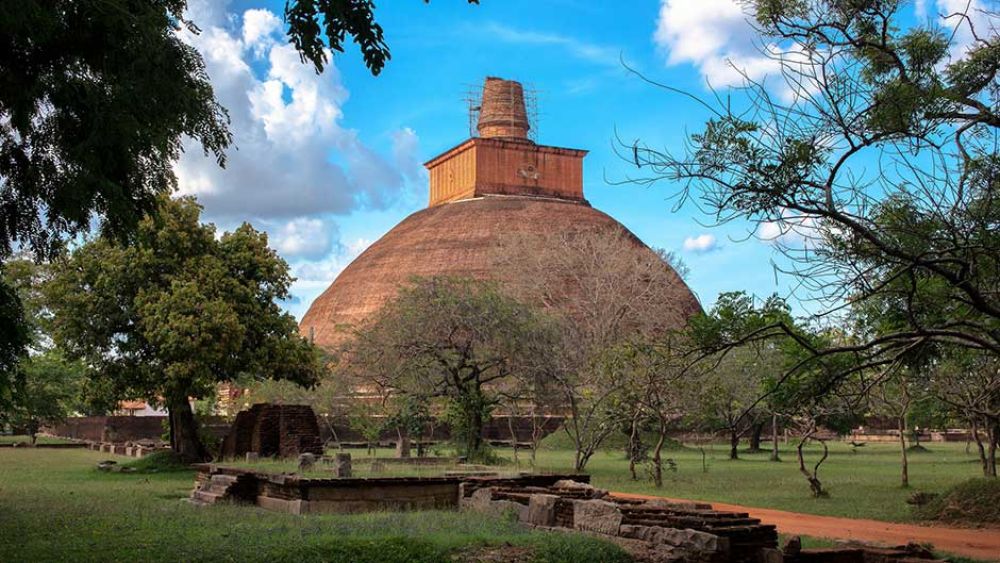

The storied city of Anuradhapura, once the epicenter of Theravada Buddhism and the seat of Sinhalese power, is home to one of the most significant monuments of the ancient world, Jetavanaramaya. This monumental stupa, built in the 3rd century by King Mahasena, stands in testament not only to the religious devotion of the time but also to the incredible architectural and engineering prowess of ancient Sri Lankans. Jetavanaramaya was at the heart of the flourishing monastery Jetavana and was the third tallest structure in the ancient world after the pyramids of Giza.
The historical significance of Jetavanaramaya piqued the curiosity of early travellers and scholars. With the advent of European colonialism, specifically during the British period in Sri Lanka, archaeological interests surged. It was during the 19th and early 20th centuries that the ancient city of Anuradhapura began to reveal its past glory to the modern world through systematic excavation and preservation work.
Tourism in Anuradhapura, and particularly to Jetavanaramaya, gained momentum with the declaration of the ancient city as a UNESCO World Heritage Site in 1982. This recognition drew global attention and transformed Anuradhapura and its legendary Dagoba into a must-visit pilgrimage site for Buddhists and a compelling attraction for history enthusiasts worldwide. The restoration and preservation efforts have been key in sustaining the interest and facilitating the growth of tourism in this historic locale.
In recent years, there has been a shift towards more sustainable and experiential tourism practices in the Anuradhapura region. Visitors to Jetavanaramaya are not merely interested in viewing the stupa but are seeking a deeper understanding of its history, cultural significance, and the role it plays in contemporary Buddhist practices. As a result, guided tours that delve into the rich narrative of the site are increasingly popular.
Another trend is the growing popularity of technology-enhanced experiences. Augmented reality (AR) and virtual reality (VR) tours that recreate the ancient world of Jetavanaramaya are starting to appear, offering tourists a unique way to experience the site's former grandeur. Additionally, the area has seen a growth in boutique hotels and responsible tourism initiatives that cater to travellers seeking both comfort and positive local impact.
With its majestic stature and profound spiritual aura, Jetavanaramaya will continue to be a beacon drawing visitors to the sacred city. It remains not only a relic of the past but also a living, breathing testament to Sri Lanka's enduring heritage and the evolving nature of tourism within the country.